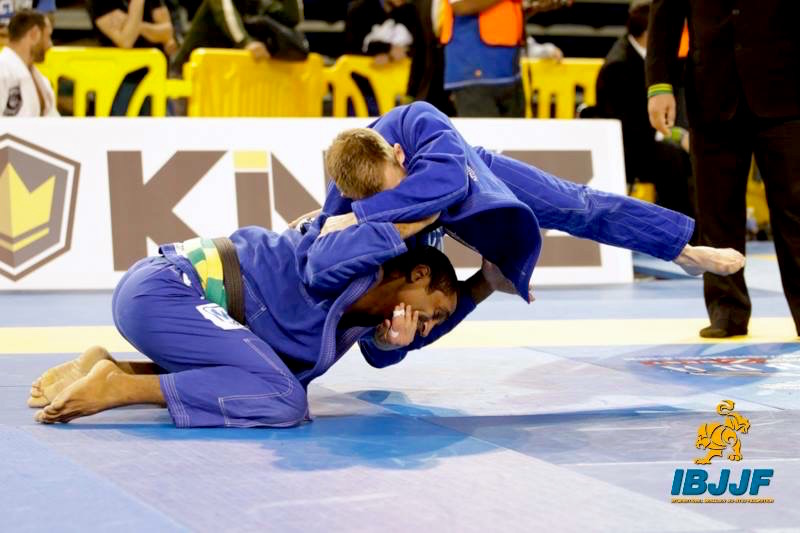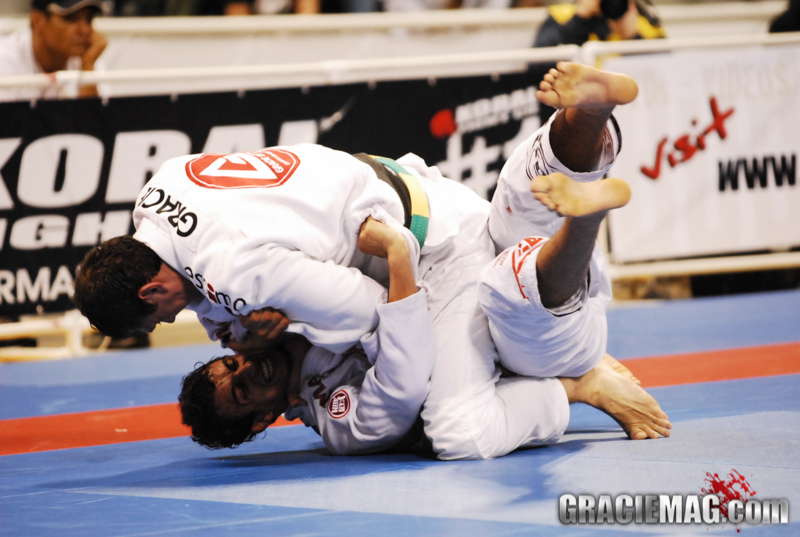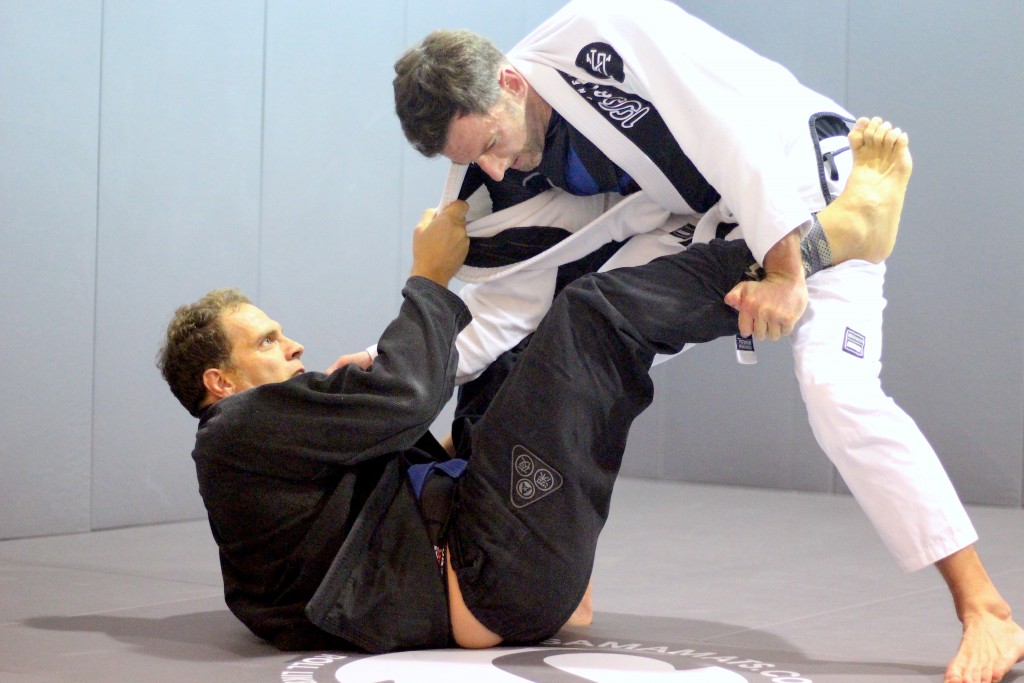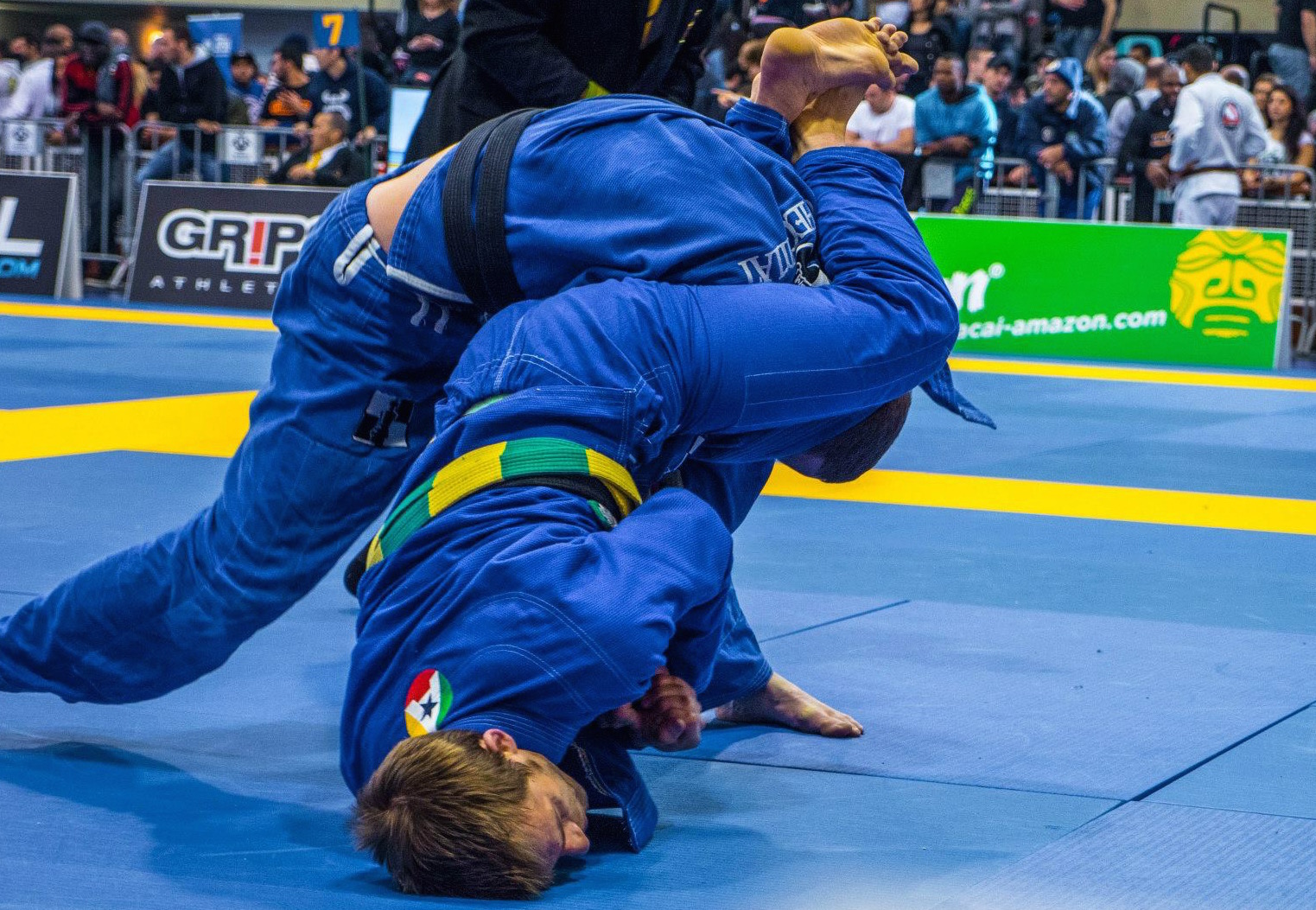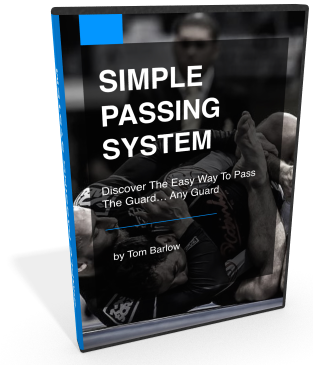Why Every Jiu Jitsu Player NEEDS A Takedown Plan And How To Build One!
I have a question for you. Why do Jiu Jitsu players neglect takedowns?
If you think about it, every Jiu Jitsu match starts standing, as does every situation you might need a takedown. Yet most Jiu Jitsu players rarely spend time working on their takedowns.
Yes, you can pull guard, but that won’t score you any points and it gives your opponent an opportunity to attack. It never made sense to me. However, the lack of takedown skill in people’s Jiu Jitsu gives you an opportunity.
The Hidden Opportunity In Developing Your Takedowns
My ability to score a takedown at any point during a fight was one key reason for my success at the lower belt levels.
Don’t get me wrong, my takedown skills are far from spectacular, but they’re better than most, and I could rely on them when needed.
Your takedown game doesn’t need to be amazing either to be effective.
All you need are a couple of go-to takedown techniques and you’ll be streets ahead of most BJJ players.
What’s more, developing a strong takedown game will benefit many other areas of your Jiu Jitsu. You’ll be able to scramble out of dangerous positions more easily and, if you think about it, a sweep is just a takedown that starts in guard.
The Secret To Successful Takedowns
Where most people go wrong with takedowns is they try to learn too many techniques. If you watch most elite level Judo or Wrestling competitors they only use two or three takedowns. However, their set-ups, timing, and counters are perfect.
You don’t need to know hundreds of different takedowns, just one takedown really well. MMA super coach, Greg Nelson, put this perfectly when he said:
“Jack of all trades, but master of none. Master of few and JACK everyone.”
This concept should be applied takedowns and almost every other aspect of your Jiu Jitsu as well.
An excellent example of this concept is when Roger Gracie submitted all 9 of his opponents at the 2009 World Championships with chokes from the mount.
All of Roger’s opponents knew he was going to try to take them down, pass their guard, transition to mount, and choke them. Yet not a single one of these elite level competitors could stop him. Personally, I believe this is the highest level of skill in Jiu Jitsu.
You could argue that Roger Gracie is special, and he is, but almost every successful competitor applies this same philosophy to there game. Here are a couple of examples: Rousimar Palhares and heel hooks, The Mendes Bros and the Berimbolo, Kosei Inoue and the Uchi Mata, John Smith and the Low Single.
How To Develop Your Takedown Strategy
As I said earlier, your takedown game only needs to revolve around one grip or position. But from that position, you need to know how to enter it from anywhere and how to complete it regardless of your opponents reaction.
Once I understood that concept, I had a lot more takedown success. I even started competing in Judo tournaments and did pretty well. (Apart from the time I got a concussion, but that’s another story.)
Once I established my grips, my basic flow always goes something like this; off-balance with my initial attack, then follow up with counter attacks depending on their reaction.
If you follow a similar process (grip, off-balance, counter) and train it enough, you can become a takedown machine.
The Easy Way To Get Started
So you may be wondering how you can develop your own takedown game. There are many different positions you can build your takedown game from including the double leg, the single leg, judo grips or many others positions.
It really depends on your style of Jiu Jitsu. To help you get started, I’m going to share with you part of my takedown strategy.
Part 1: Setting Your Grips
My takedown game has evolved over the years. However, it still begins by establishing a collar grip.
The collar grip is easy to set up, it allows me to control my opponent and neutralise their attacks, and there’s a lot of easy takedowns you can set up from there.
In the video below, you’ll learn how I set up the grip and neutralise my opponents counters, plus a drill to help you improve your grip control.
Part 2: Running The Pipe
There are a number of takedowns that can be attacked just from the collar grip. However, I primarily transition to the 2 on 1 position or a modified Judo grip combining the collar grip with the wrist grip on the other side.
Both are great attacking positions, but the modified judo grip is the simplest to start with as it increases your control over your opponent. One of the easiest (and highest percentage) takedowns from the modified Judo grip is the single leg.
Check out the video below to see how I set up the single leg and finish by ‘running the pipe.’
Part 3: The Single Leg Foot Sweep
When attempting takedowns, one of the most common areas I see people struggle with is chaining their attacks together.
In my experience, your opponent will normally defend your initial attack. Instead of letting this stop you dead in your tracks, be persistent and keep linking takedowns together until you complete your takedown or if you feel endanger of being countered.
In the video below, you’ll learn a simple follow up technique if your opponent defends your initial attack.
Part 4: The Levitation Guard Pull
Hopefully, you’re starting to see the benefit to developing a strong takedown game. However, there are still times you may want to pull guard.
For example, you might come up against an Olympic level wrestler or Judo player, or maybe it’s late in a fight and you just want to stall. Whatever the reason, you don’t want to have to switch your grips to pull guard. That would be a dead giveaway something is about to happen.
In the video below, I share one of my favourite ways to pull guard from the collar grip. Even better, it looks cool too.
What If They Pull Guard?
Now you may be thinking “What if they pull guard?” That’s a great question, and I’m glad you brought it up. The answer is, you have to train that situation too.
You have to anticipate your opponents guard pull and attack before they lock their guard. Typically, I try to attack with a foot sweep or a toreando pass but it will depend on the situation.
The collar & wrist grip I shared earlier is perfect for countering your opponent’s guard pull and allowing you to attack straight away.
Final Thoughts…
As I said at the start of this article, I believe everyone should have at least one takedown they know really well.
If you don’t know where to begin, start with the techniques covered in this article. This will give you a solid base to build your takedown game from.
To help you develop the techniques here’s short training plan to practice these takedowns. Here’s the plan:
- Collar Grip Fighting: 3 min rounds as shown in the first video.
- Running The Pipe: 3 min round drilling the technique (alternate with your partner)
- Transition to Single Leg Foot Sweep: 3 min round drilling the technique (alternate with your partner)
- Specific Training from Standing: 3 min round.
This plan should take around 15 minutes to complete and could easily be fitted in before or after class. If you followed the plan for a month, I can guarantee your takedown skills dramatically increase.
If you enjoyed this article, leave a comment below and let me know. I always appreciate the feedback.
If you want a FREE copy of my eBook Performance Drilling and discover how to train like a world champion click the button below.
